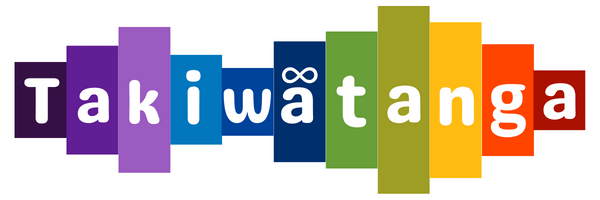I watched the presentation, Dealing with Challenging Behaviours with Angela West, ABA
(ABA – Applied Behaviour Analysis)
Intro:
This is Lloyd I AM and you are listening to Takiwatanga, love not cure, exploring autism one strength at a time.
Body:
AutismSpeaks describe applied behavioral analysis as a therapy that is based on the science of learning and behavior.
Understanding a person’s behavior can help in setting up the right goal for a child on the autism spectrum.
Applied Behaviour Analysis or ABA, focuses more on increasing behaviors that will support kids in their daily living activities while reducing harmful behaviors that will not support them.
Angela said if you think that your child needs support in their learning, seek early intervention. Early intervention is necessary to receive optimal results. Seek expert advice.
ABA has gained popularity because of its effectiveness when applied because work is repeatable and repeatable work becomes a skill that supports the child.
Imagine you are walking with your child at the park. While walking, the child started to cry.
You tried to comfort the child but to your surprise, the crying has led to a meltdown. Then you start to panic, you are trying to comfort the child but it is not working and you are running out of ideas on what to do…
When this happens, Angela suggests that you should remain calm during a meltdown. Step back from the situation, and start asking yourself these three questions.
- What happened before the meltdown?
- What is the response of the people around?
- What’s the goal of my child in this situation?
If you ask the question of what happened before the meltdown, your brain will position you as an observer of the event and not as part of the event. If you are an observer of the event you are more likely to think clearly about finding the solution to the problem.
Because if you are part of the event, you are going to be in fight or flight mode. Fight or flight mode will prevent you from seeing things objectively and stop you from looking for a better way to handle the situation.
If you have positioned yourself as an observer to the event, it will be easier to find the root cause of the problem and address it.
Remember that a child’s behavior is a way of communication if there is something requiring your attention. And that, a tantrum is a behavior where a child has a purpose like having that extra cookie or staying up late at night; while a meltdown is a result of an overload in sensory perception like being in a crowded place or there is too much noise.
So instead of running back to the car when your child is melting down, you can step back and know what was happening before the meltdown.
If you know what happened before the meltdown, you can work on addressing the root cause of the meltdown.
But what if, what if a meltdown is happening every time you are at the park?
Start taking notes of what is triggering your child’s meltdowns.
Does the meltdown happen every time you are in a specific area of the park? Is it too crowded, or is it noisy?
By knowing the triggers of the meltdown, you can formulate strategies to manage the triggers. Maybe go to the park when it’s not crowded. Or maybe move away from the noisy environment.
- Ask the question, what is the response of the people around when the meltdown happened…
If a meltdown happened, what was the reaction of the people around you? Did they panic, did they scream?
When this happens, you can move the child away from the screaming crowd.
You can also introduce another trigger and divert the child’s attention to his favorite toy or maybe let the child watch his or her favorite video.
If you are in a place where you know the people around you like visiting friends or maybe grandparents.
Give them a heads up beforehand so in case your child will have a tantrum or a meltdown, the people around you will not react and show an ounce of panic.
In this way, the child will not get a validation that if they make a tantrum in front of others, they will get what they want.
- The third question you have to ask yourself is, what is the goal of my child in this situation?
Is the child seeking attention or is something serious is happening?
Never negotiate with a child during a tantrums or a meltdown because the child will not receive complex information. You have to wait for an opportunity to get the child engaged again.
by knowing the reason why the sudden meltdown, you can assess the situation and address the cause of the tantrum or meltdown.
Does ABA only work for sudden changes in the environment resulting in a change in behaviors and meltdowns?
ABA works across the stages in the life of an autistic person.
As an example, let’s say you have a teenage autistic child, who does not want to brush his teeth.
Before ABA can be applied, make sure that the child can do the step-by-step procedure to brush the teeth.
The child must have the skills to do this so you can reinforce this activity further.
If the child doesn’t have the skills to do this yet, you can write very minute steps that the child can follow.
If the child is non-verbal, you can use pictures as a guide.
Since the child is just starting, do not force the child to do it twice a day brushing.
You can start this for a child 3 times a week and then increase the frequency by reinforcing the activity through rewards.
Applied behavior analysis encourages parents to participate during therapy. It is important to know the goals of both parents and the child. This will help in developing a plan to support the child.
ABA is a repeatable activity that in the end will help build that skill for a child. There are no quick fixes and like any other therapy, parents may not quickly see good results.
This therapy also introduces reinforcing activities to support the child-like giving overly enthusiastic praise when a child does amazing things.
If praise is not valuable to a child, you can reinforce positive praise by answering and giving attention to the child every time he or she asks questions.
You would like to implement the applied behavior therapy with an expert, Angela said, parents and carers should be ready with it because it will be a huge leap for the child and requires great effort to support.
This journey, like any other journey, is a hard road for everybody so parents will need to be patient. Seek help from as many people as possible and find your support network.
In the end, to manage a meltdown, you need to know what has triggered this behavior, know what are the reactions of the people around and ask the question, what is my child trying to achieve with this situation.
End:




0 Comments